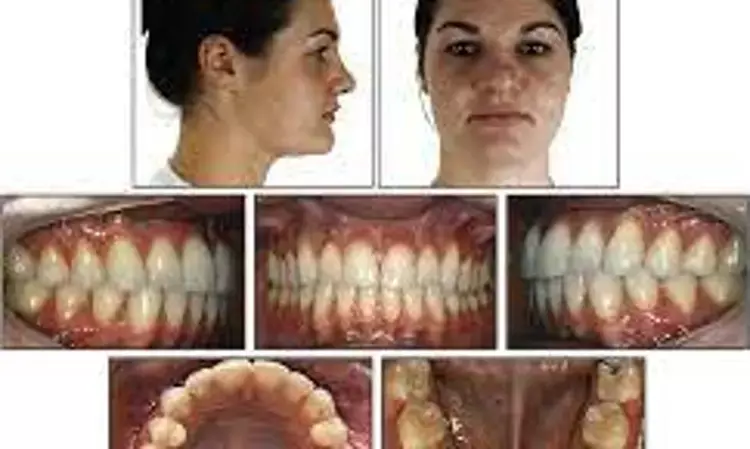- Home
- Medical news & Guidelines
- Anesthesiology
- Cardiology and CTVS
- Critical Care
- Dentistry
- Dermatology
- Diabetes and Endocrinology
- ENT
- Gastroenterology
- Medicine
- Nephrology
- Neurology
- Obstretics-Gynaecology
- Oncology
- Ophthalmology
- Orthopaedics
- Pediatrics-Neonatology
- Psychiatry
- Pulmonology
- Radiology
- Surgery
- Urology
- Laboratory Medicine
- Diet
- Nursing
- Paramedical
- Physiotherapy
- Health news
- Fact Check
- Bone Health Fact Check
- Brain Health Fact Check
- Cancer Related Fact Check
- Child Care Fact Check
- Dental and oral health fact check
- Diabetes and metabolic health fact check
- Diet and Nutrition Fact Check
- Eye and ENT Care Fact Check
- Fitness fact check
- Gut health fact check
- Heart health fact check
- Kidney health fact check
- Medical education fact check
- Men's health fact check
- Respiratory fact check
- Skin and hair care fact check
- Vaccine and Immunization fact check
- Women's health fact check
- AYUSH
- State News
- Andaman and Nicobar Islands
- Andhra Pradesh
- Arunachal Pradesh
- Assam
- Bihar
- Chandigarh
- Chattisgarh
- Dadra and Nagar Haveli
- Daman and Diu
- Delhi
- Goa
- Gujarat
- Haryana
- Himachal Pradesh
- Jammu & Kashmir
- Jharkhand
- Karnataka
- Kerala
- Ladakh
- Lakshadweep
- Madhya Pradesh
- Maharashtra
- Manipur
- Meghalaya
- Mizoram
- Nagaland
- Odisha
- Puducherry
- Punjab
- Rajasthan
- Sikkim
- Tamil Nadu
- Telangana
- Tripura
- Uttar Pradesh
- Uttrakhand
- West Bengal
- Medical Education
- Industry
AI may help detect posterior restoration of permanent teeth on intraoral photographs

Artificial intelligence is instrumental in taking intraoral photographs, according to a recent study published in the Journal Of Dentistry.
Intraoral photographs might be considered the machine-readable equivalent of a clinical-based visual examination and can potentially be used to detect and categorize dental restorations. The first objective of this study was to develop a deep learning-based convolutional neural network (CNN) for automated detection and categorization of posterior composite, cement, amalgam, gold and ceramic restorations on clinical photographs. Second, this study aimed to determine the diagnostic accuracy for the developed CNN (test method) compared to that of an expert evaluation (reference standard). The whole image set of 1761 images (483 of unrestored teeth, 570 of composite restorations, 213 of cements, 278 of amalgam restorations, 125 of gold restorations and 92 of ceramic restorations) was divided into a training set (N = 1407, 401, 447, 66, 231, 93, and 169, respectively) and a test set (N = 354, 82, 123, 26, 47, 32, and 44). The expert diagnoses served as a reference standard for cyclic training and repeated evaluation of the CNN (ResNeXt-101–32 × 8d), which was trained by using image augmentation and transfer learning. Statistical analysis included the calculation of contingency tables, areas under the receiver operating characteristic curve and saliency maps.
Results of the stud are:
After training was complete, the CNN was able to categorize restorations correctly with the following diagnostic accuracy values: 94.9% for unrestored teeth, 92.9% for composites, 98.3% for cements, 99.2% for amalgam restorations, 99.4% for gold restorations and 97.8% for ceramic restorations.
Thus, it was possible to categorize different types of posterior restorations on intraoral photographs automatically with a good diagnostic accuracy. Dental diagnostics might be supported by artificial intelligence-based algorithms in the future. However, further improvements are needed to increase accuracy and practicability.
Reference:
Automated detection of posterior restorations in permanent teeth using artificial intelligence on intraoral photographs by Paula Engels et al. published in the Journal of Dentistry.
https://www.sciencedirect.com/science/article/abs/pii/S0300571222001737
Dr. Shravani Dali has completed her BDS from Pravara institute of medical sciences, loni. Following which she extensively worked in the healthcare sector for 2+ years. She has been actively involved in writing blogs in field of health and wellness. Currently she is pursuing her Masters of public health-health administration from Tata institute of social sciences. She can be contacted at editorial@medicaldialogues.in.
Dr Kamal Kant Kohli-MBBS, DTCD- a chest specialist with more than 30 years of practice and a flair for writing clinical articles, Dr Kamal Kant Kohli joined Medical Dialogues as a Chief Editor of Medical News. Besides writing articles, as an editor, he proofreads and verifies all the medical content published on Medical Dialogues including those coming from journals, studies,medical conferences,guidelines etc. Email: drkohli@medicaldialogues.in. Contact no. 011-43720751


